by Gargi Bhattacharyya, Kirsten Forkert, Janna Graham and Federico Oliveri
On 25 April 2016 the Commons rejected an amendment to the new Immigration Bill which attempted to force the government to allow 3,000 unaccompanied Syrian child refugees into the UK. The rejection of the amendment tabled by Lord Dubs, a survivor of the Holocaust, produced the unexpected reaction of The Daily Mail, normally hostile to asylum seekers: while reaffirming the lack of legal obligations to do so, the newspaper appealed to give sanctuary to those “lost children”, as a matter of “moral and humanitarian duty”. This reaction was part of a larger public support to the amendment, followed by indignation against its rejection.
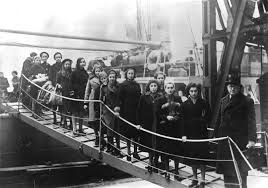
Humanitarian shifts like this have occurred frequently in the last two years, both in the UK and Italy. Within generally alarming debates on the “refugee crisis”, these shifts seem to suspend securitarian and utilitarian discourses framing mobility and presence of displaced people as a problem at best, and at worst as related to dubious if not criminal activities. This has to do with the prevailing representation, exacerbated by economic crisis and austerity, which presents migration as a threat to national security and welfare, and migrants as ‘taking things’ which are not rightfully theirs (jobs, housing, social benefits, access to public services). As found out recently by the Migration Observatory, the most common word still associated with the word “immigrant” in the UK mainstream print media is the word “illegal”.
May such humanitarian shifts in debates offer some hope that, at least momentarily, the public conversation can be changed? As researchers and activists, we are interested in exploring the potentials and limitations of these disruptive moments to develop into larger-scale transformations in public attitudes and policies towards displaced people.
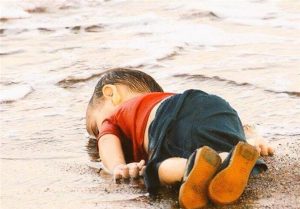
Our research project was inspired by a crucial humanitarian shift occurred in the summer of 2015. The summer began in UK with a series of newspaper headlines and speeches calling asylum seekers “swarms”, “floods” and “marauders”, with controversial Sun columnist Katie Hopkins even comparing them to “cockroaches”. At the same time, in the UK, donations of clothing to Calais were organised fairly spontaneously on social media – which seemed at odds with the rhetoric coming from the government and the mainstream press. This then changed with the iconic photographs of the Syrian child Alan Kurdi: one of his lifeless body washed up on the shores of a Turkish beach, and another with him being carried away in the arms of a policeman. For a brief moment, the European refugee crisis was framed as a humanitarian crisis (even by the normally hostile tabloid press), and stories about the conflict people had fled and the sacrifices they had made to leave their countries made media headlines. The solidarity demonstrations and sit-ins that we had attended as activists, the Facebook groups and the social initiatives welcoming refugees grew larger after this emotional turning point.
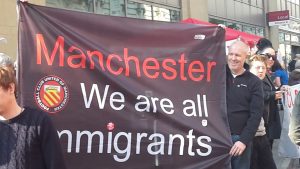
Attitudes have hardened again since that summer of 2015. The terrorist attacks in Paris and Brussels have taken place since then, as well as the sexual assaults in Cologne. All have been blamed on immigrants and refugees to a certain extent, despite evidence showing that all of the named suspects in the Brussels attacks and the Paris attacks were European citizens, and that only 3 out of the 58 suspects in the Cologne sexual assaults were refugees. This has also fuelled an increasingly hegemonic “clash of civilisations” narrative from some commentators about immigration, especially from Islamic countries, as a threat to European liberal democracy, in order to push states to reinforce border controls.
Taking a closer look, humanitarian and securitarian concerns may be seen as deeply imbricated rather than as alternative narratives. This imbrication was evident in particular in the Italian debates on migrant deaths at sea. On one side, shipwrecks such as that occurred on 3 October 2013 half a mile from the island of Lampedusa, when 366 people lost their lives in the deadliest tragedy ever occurred in the Mediterranean after World War II, produced an unprecedented sensation throughout Europe. Everybody was moved by the pictures taken by scuba divers of two dead bodies locked in an embrace at the bottom of the sea. This highly emotional context pushed the Italian government to launch a major search and rescue mission in the Mediterranean, called Mare Nostrum, which ran for a year before government ministers across Europe, including the UK, expressed concerns that it encouraged people to make dangerous crossings in the expectation of rescue.

On the other hand, the humanitarian approach constructs people as victims to be rescued and presents deaths at sea as simultaneously sensational and almost natural events. It legitimises the militarisation and the externalisation of border controls in order to prevent new fatal incidents. This means that causes of people displacement are not publicly discussed, including war and armed violence; the role of restrictive EU migration and asylum policies in causing deaths at sea are also left out of public debate, as traffickers alone are blamed. The humanitarian approach reduces migrants to shipwrecked persons.
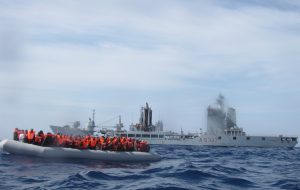
But what happens to people after being rescued by these military-humanitarian actors? Issues they face as they try to make a life in a new country attract less media attention, including violations of right to asylum, poor accommodation, social marginalisation, labour exploitation or loss of legal status. Refugees are thus constructed as vulnerable bodies naturally exposed to the risk of death, yet generously rescued by governmental action. Does this everyday exposure to images of rescued people familiarise the public with distress image which naturalises the death of “the others”, suspends solidarity and prevents indignation and critical insights?
Finally, the handling of the refugee crisis by European governments and institutions (caught between humanitarian concerns and pressures from anti-immigrant and right populist groups) becomes seen as representative of a failure of governance: failure to control borders, to offer humanitarian aid, to respond effectively to global conflicts such as civil war in Syria and instability in Libya. The refugee crisis will therefore be apprehended as a crisis of the European border regime and, more generally, of the EU as a political project based among others on internal freedom of movement and solidarity between member states. Decisions of some Central-Eastern European governments to build fences on their borders and ask for suspension of the Schengen Agreement came in tension with more welcoming yet selective attitudes displayed by countries like Germany and with the efforts made by countries like Greece and Italy to manage new arrivals. Many countries, including UK and Italy, have experienced mistrust towards national, European and international institutions, connected to concerns about political corruption, economic crisis and border controls. This is currently playing out in the UK in the referendum on membership of the European Union, which in many ways a referendum on immigration.
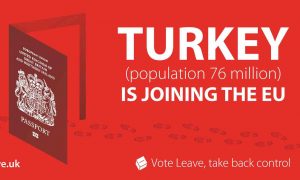
Our research project tries to disentangle these complex developments through exploring in particular how people in the UK and Italy make sense of global conflicts and of their nexus with contemporary migrations towards Europe, and how this understanding shapes attitudes to those displaced by war and armed violence, and to public authorities dealing with these issues. We are interested in looking at how the different dimensions of the refugee crisis highlighted above are covered in the mainstream media, but also in mapping initiatives set up by citizens (such as the donations of clothing mentioned earlier) which reflects the depth of solidarity-based impulses towards the victims of war and violence.

The perspectives and experiences of refugees themselves are crucial to our project as those voices are generally silenced or under-represented in the mainstream debate. For instance, research carried out by Migrant Voice campaign organisation on media coverage of immigration in UK showed that only 12% quoted a migrant. Through carrying out interviews and memory workshops, we hope to find out what these perspectives and experiences have to offer in understanding conflict and imagining the future of Euro-Mediterranean societies.
